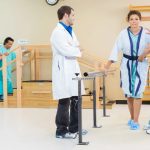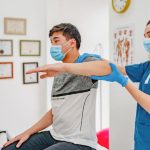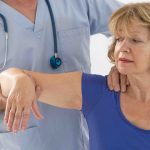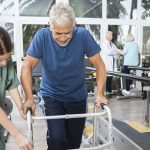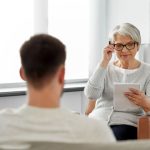Updated on January 16, 2024
Medically reviewed by Huma Sheikh, MD
Strokes are active, progressive illnesses. They come on suddenly and evolve dramatically over the first few hours. Over the following days, the injury and disability from a stroke usually reach a maximum peak and then stabilize. The suddenness of the brain injury and the resulting neurological deficits can be shocking.
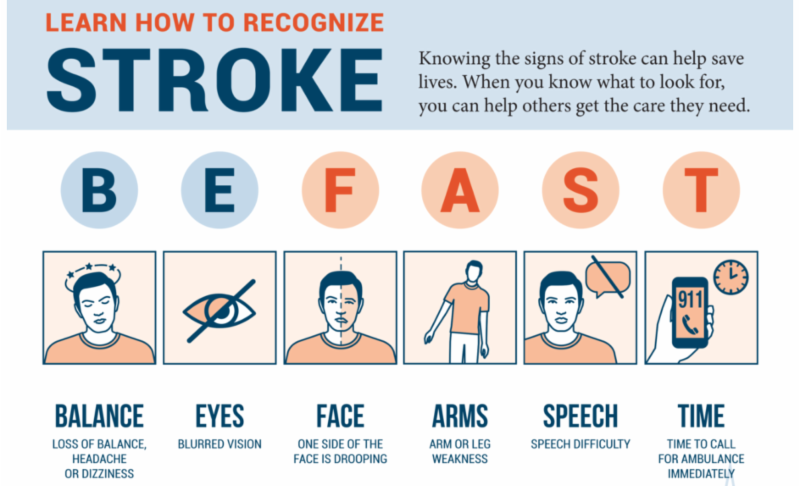
This article discusses the recovery period from a stroke and what effects to expect.
Rate of Recovery
The damage of a stroke is fast and aggressive. Recovery, on the other hand, is slow, subtle, and stepwise, with the most rapid changes occurring during the first few weeks following stroke.1
Recovery and healing may occur spontaneously. However, there are medical interventions that can help maximize repair and functional recovery.
Stroke treatment helps improve the overall outcome after a stroke, but treatment does not usually speed up the rate of recovery.
Brain Edema
Stabilization is the first step in recovering from a stroke. After a stroke, most survivors experience some degree of inflammation in the brain, analogous to swelling after an injury, such as the noticeably swollen lump after an injury to the arm or leg.
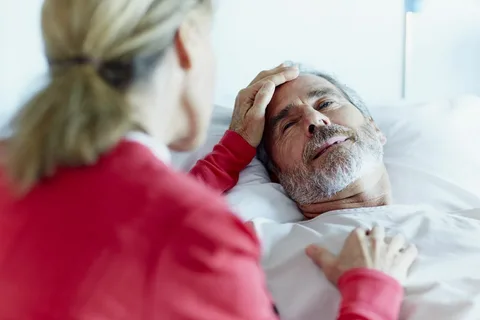
This puffiness, called edema, is part of the body’s repair mechanism. The swelling is composed of a mix of fluid and inflammatory cells.
Because the brain is enclosed in the skull, there is not much space to accommodate swelling. Thus, the edema that develops after a stroke can compress the brain, resulting in increased intracranial pressure and causing stroke symptoms to worsen, sometimes temporarily.2
In some cases in which the swelling is severe, a surgical procedure known as hemicraniectomy may be necessary to relieve the swelling.2
Brain edema begins to develop during the first 24 to 48 hours and reaches its peak three to five days after the onset of a stroke.2 Afterward, the edema decreases gradually over the following weeks.
Often, close monitoring of body fluid concentration in the hospital setting helps reduce the additional brain damage that may be caused by severe edema after a stroke.
Video: “Rehabilitation after a stroke”
For additional information about the rehabilitation after a stroke you can watch a video demonstrating exercises and rehabilitation recommendations.
A set of exercises for rehabilitation of post-stroke patients. Set No1 is aimed at improving the functions associated with mobility in bed.
Blood Pressure
Blood pressure typically fluctuates during and after a stroke. At the current time, medical management of blood pressure variations within the first few days after a stroke consists primarily of observation and very limited interference with blood pressure shifts.
Spontaneous blood pressure increases and decreases during and after a stroke is the body’s natural way of maintaining fluid balance and blood flow to the brain at this critical time.3 This leads to limited artificial blood pressure control.
Medical adjustment of blood pressure is reserved for extremely high or extremely low blood pressure that may interfere with healing. Generally, blood pressure alterations resulting from a stroke stabilize within the first two to three days.
Blood Sugar
Some alterations in blood sugar and stress hormones also occur with a stroke.4 These changes stabilize in the first few days and then continue to normalize within the first few weeks after a stroke.
EXERCISES FOR REHABILITATION OF POST-STROKE PATIENTS. SET №2 IS AIMED AT IMPROVING THE MOBILITY AND STABILIZATION OF THE PELVIC COMPLEX
Brain Recovery
Once the body stabilizes, usually with close medical monitoring and a degree of medical management, the brain begins to heal. Medical management is primarily focused on preventing worsening progression of the stroke.
Maintenance of optimal medical conditions, such as fluid control, blood pressure management, and blood sugar regulation help maximize neuronal protection after a stroke. Restoration of brain function and brain cell recovery after a stroke begin within a few days and continue for months and even years before reaching stability.5
Therapy
Therapy is very important in helping the brain recover by stimulating the natural process of neuroplasticity.
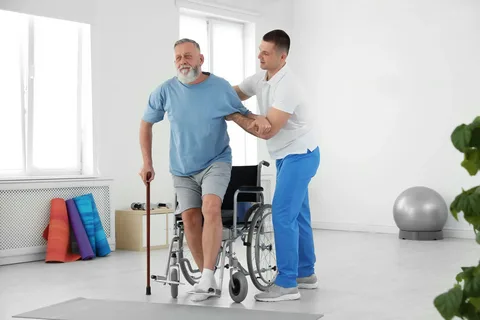
Types of Therapy After a Stroke
Speech and swallow therapy, physical therapy, and occupational therapy can aid in regaining function following a stroke.6
Overcoming visual or spatial neglect can be one of the biggest challenges in recovery. Mood affects stroke recovery, and a stroke affects mood, so attention to depression and anxiety is a necessary part of the healing process.
Occupational therapy can recommend modifications, such as changes in the home or bathroom or using assistive devices. The person may also need a caregiver to assist in the activities of daily living.
Side Effects
Other challenges in stroke recovery may include seizures, muscle atrophy, and spasticity.7 In many instances, preventative measures can help to avoid these and other complications.
A SET OF EXERCISES FOR REHABILITATION OF POST-STROKE PATIENTS. SET №3 IS AIMED AT IMPROVING THE MOBILITY AND FUNCTION OF THE UPPER LIMB, STABILIZING THE SHOULDER GIRDLE
Preventing Another Stroke
One of the most important steps in stroke recovery is preventing another stroke. Your healthcare providers will work to find the reasons that the stroke occurred and address them so you can have the highest chance of preventing another one.
By Heidi Moawad, MD
Dr. Moawad is a neurologist and expert in brain health. She regularly writes and edits health content for medical books and publications.

Demo version of GRS workouts for rehabilitation of post-stroke patients on YouTube
You can find more information about Stroke in our Blog.
Our website presents sets of exercises for the rehabilitation of post-stroke patients in the following four areas:
-
A SET OF EXERCISES FOR REHABILITATION OF POST-STROKE PATIENTS. SET №1 IS AIMED AT IMPROVING THE FUNCTIONS ASSOCIATED WITH MOBILITY IN BED
-
EXERCISES FOR REHABILITATION OF POST-STROKE PATIENTS. SET №2 IS AIMED AT IMPROVING THE MOBILITY AND STABILIZATION OF THE PELVIC COMPLEX
-
A SET OF EXERCISES FOR REHABILITATION OF POST-STROKE PATIENTS. SET №3 IS AIMED AT IMPROVING THE MOBILITY AND FUNCTION OF THE UPPER LIMB, STABILIZING THE SHOULDER GIRDLE
-
A SET OF EXERCISES FOR REHABILITATION OF POST-STROKE PATIENTS. SET №4 IS AIMED AT IMPROVING THE MOBILITY AND FUNCTION OF THE LOWER LIMB, STABILIZING THE PELVIC GIRDLE
You may also find useful information and sets of exercises in the section APHASIA AND DYSARTHRIA, where 5 sets of exercises for rehabilitation for speech disorders are currently presented.
Summary
The time course of a stroke is sudden and fast, and it necessitates urgent medical attention to reduce the damage. However, the recovery process is usually slow and arduous. Discuss your options with your healthcare team so you understand what to expect and how to take the best steps for recovery.
Sources
https://www.verywellhealth.com/how-long-does-it-take-for-a-stroke-to-heal-3146450
- Lee KB, Lim SH, Kim KH, et al. Six-month functional recovery of stroke patients: a multi-time-point study. Int J Rehabil Res. 2015;38(2):173-80. doi:10.1097/MRR.0000000000000108
- Dostovic Z, Dostovic E, Smajlovic D, Avdic O. Brain edema after ischaemic stroke. Med Arh. 2016;70(5):339. doi:10.5455/medarh.2016.70.339-341
- Van der jagt M. Fluid management of the neurological patient: a concise review. Crit Care. 2016;20(1):126. doi:10.1186/s13054-016-1309-2
- National Institute of Neurological Disorders and Stroke. Researchers get a handle on how to control blood sugar after stroke.
- National Institute of Neurological Disorders and Stroke. Post-stroke rehabilitation fact sheet.
- Centers for Disease Control and Prevention. Recovering from stroke.
- Xu MY. Poststroke seizure: optimising its management. Stroke Vasc Neurol. 2019;4(1):48-56. doi:10.1136/svn-2018-000175


